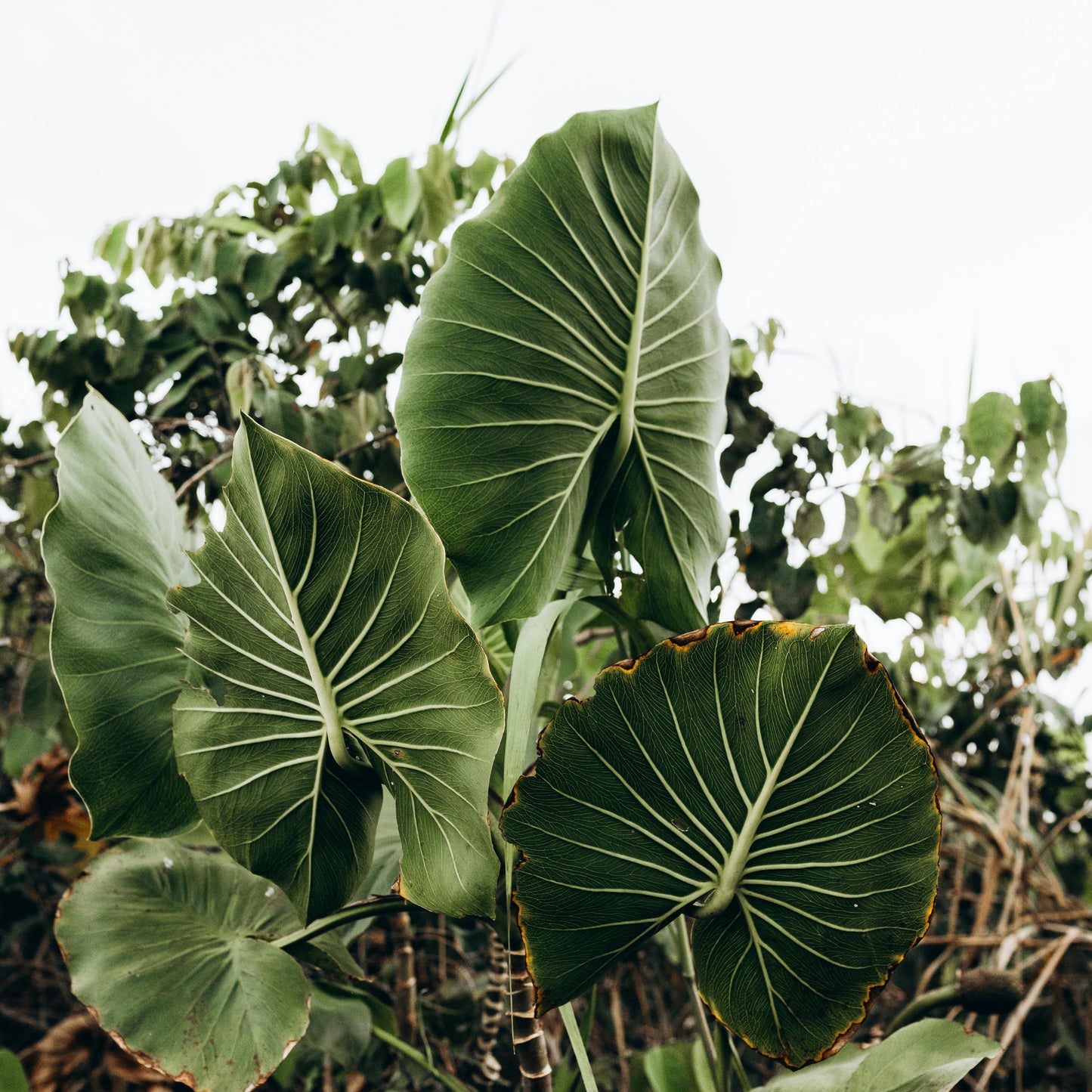VIRIAR
Alocasia macrorrhiza - Taro géant, Oreille d'éléphant - 5 graines
Alocasia macrorrhiza - Taro géant, Oreille d'éléphant - 5 graines
Impossible de charger la disponibilité du service de retrait
Description de la plante
Nom : Alocasia macrorrhiza
Noms communs : Taro géant, Oreille d'éléphant, Alocasia géant
L'Alocasia macrorrhiza , communément appelée Taro Géant, Oreille d'Éléphant ou Alocasia Géant, est une plante vivace tropicale prisée pour son feuillage imposant et spectaculaire. Originaire d'Asie du Sud-Est, cette plante est réputée pour ses immenses feuilles brillantes en forme de cœur, pouvant atteindre 1 mètre de long et 60 cm de large. Ses feuilles vert foncé, aux nervures proéminentes, lui confèrent un aspect architectural impressionnant et confèrent une ambiance tropicale luxuriante aux jardins et aux espaces intérieurs.
Cette plante peut atteindre 3 à 4 mètres de haut dans son habitat naturel, ce qui en fait l'un des plus grands représentants du genre Alocasia. L'Alocasia macrorrhiza prospère dans les environnements chauds et humides et est souvent utilisée comme point focal dans les aménagements paysagers grâce à son feuillage remarquable et à sa forme audacieuse. Elle est également populaire comme plante d'intérieur dans les régions au climat plus frais.
Culture d'Alocasia macrorrhiza
Conditions:
- Lumière : L'Alocasia macrorrhiza s'épanouit dans une lumière vive et indirecte, mais peut tolérer une ombre partielle. La lumière directe du soleil peut brûler les feuilles, surtout dans les climats chauds. En intérieur, placez la plante près d'une fenêtre avec une lumière tamisée ou dans une pièce bien éclairée.
- Température : Cette plante apprécie les températures chaudes et une forte humidité. La température idéale se situe entre 18 et 30 °C. Elle ne supporte pas le gel et doit être protégée des courants d'air froid et des températures inférieures à 10 °C.
- Sol : L'Alocasia macrorrhiza préfère un terreau bien drainé, fertile et riche en matière organique. Un mélange de tourbe, de perlite et de compost convient parfaitement. Le sol doit conserver l'humidité sans être gorgé d'eau.
- Eau : Cette plante apprécie une humidité constante, mais ne doit pas être laissée dans un sol détrempé. Arrosez régulièrement, en laissant sécher les 2 à 3 cm supérieurs du sol entre chaque arrosage. Réduisez les arrosages en hiver, lorsque la plante n’est pas en pleine croissance.
Plantation et entretien :
- Plantation : Choisissez un grand pot percé de trous de drainage et remplissez-le d'un terreau bien drainant. Placez la plante dans le pot en veillant à ce que le haut de la motte soit au même niveau que la surface du sol. Arrosez abondamment après la plantation. Pour une plantation en extérieur, choisissez un emplacement abrité, ensoleillé ou mi-ombragé.
- Fertilisation : Fertilisez l'Alocasia macrorrhiza avec un engrais hydrosoluble équilibré toutes les 2 à 4 semaines pendant la saison de croissance (printemps et été). Réduisez l'apport en automne et en hiver, lorsque la croissance ralentit. Une fertilisation excessive peut provoquer des brûlures foliaires ; suivez donc attentivement les instructions figurant sur l'emballage de l'engrais.
- Entretien : Taillez les feuilles mortes ou abîmées pour maintenir une apparence soignée et favoriser une nouvelle croissance. Essuyez régulièrement les feuilles avec un chiffon humide pour enlever la poussière et permettre à la plante de réaliser efficacement sa photosynthèse. Cette plante est sensible aux parasites tels que les tétranyques, les pucerons et les cochenilles ; vérifiez-la régulièrement et traitez-la avec un savon insecticide ou de l'huile de neem si nécessaire.
Propagation
- Division : La méthode la plus courante pour multiplier l'Alocasia macrorrhiza est la division. Lors du rempotage, séparez les rejets de la plante mère. Chaque division doit comporter au moins une feuille et une partie du système racinaire. Plantez les divisions dans des pots individuels remplis d'un terreau bien drainant et arrosez abondamment.
- Rhizomes : Cette plante peut également être multipliée par rhizomes. Coupez les rhizomes sains de la plante mère et plantez-les dans un substrat humide et bien drainé. Conservez les rhizomes dans un environnement chaud et humide pour favoriser la germination et la croissance.











